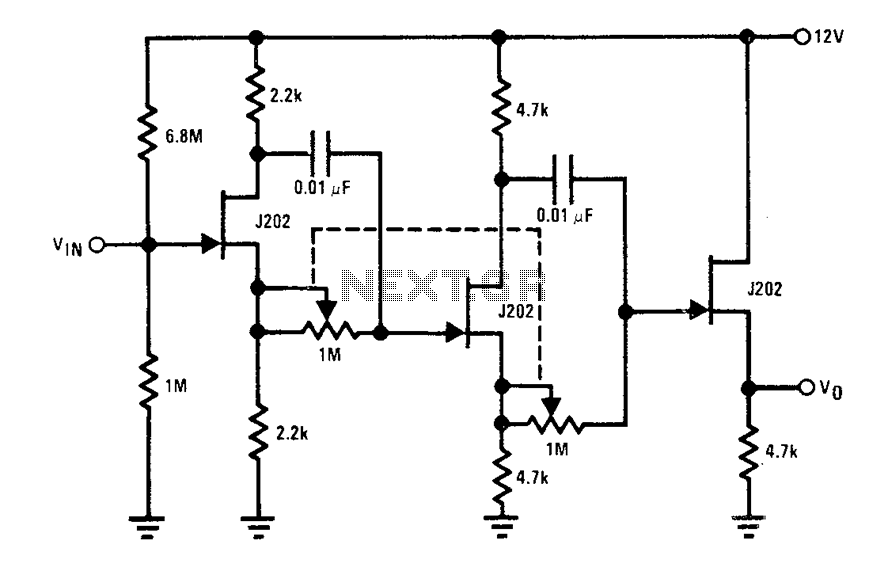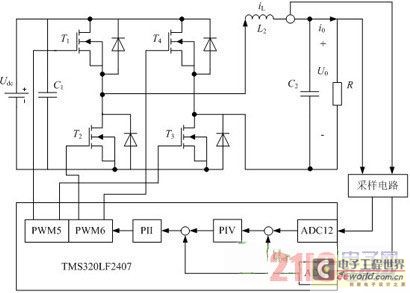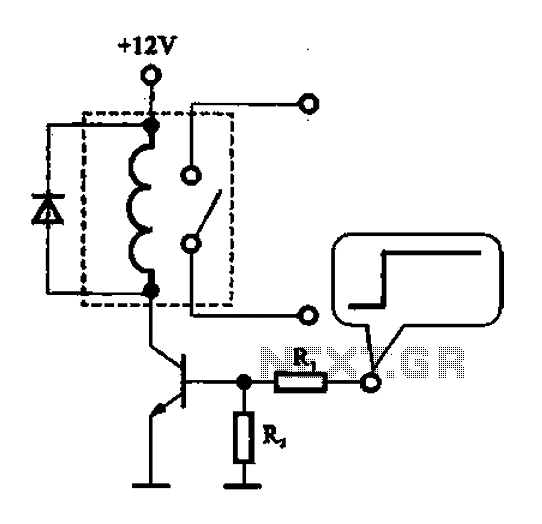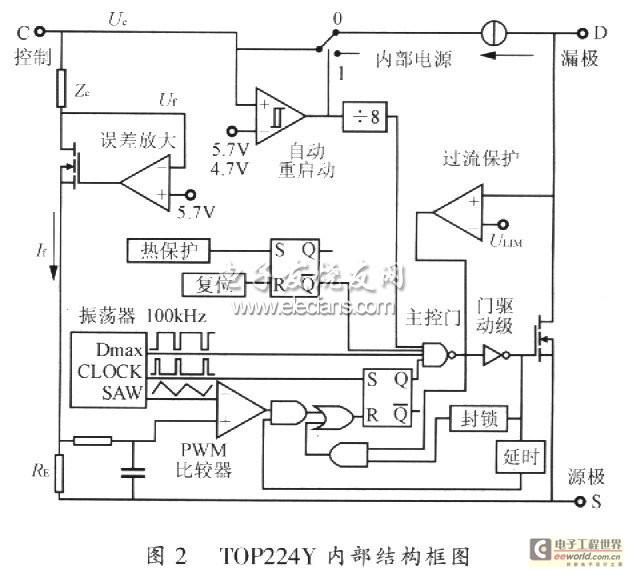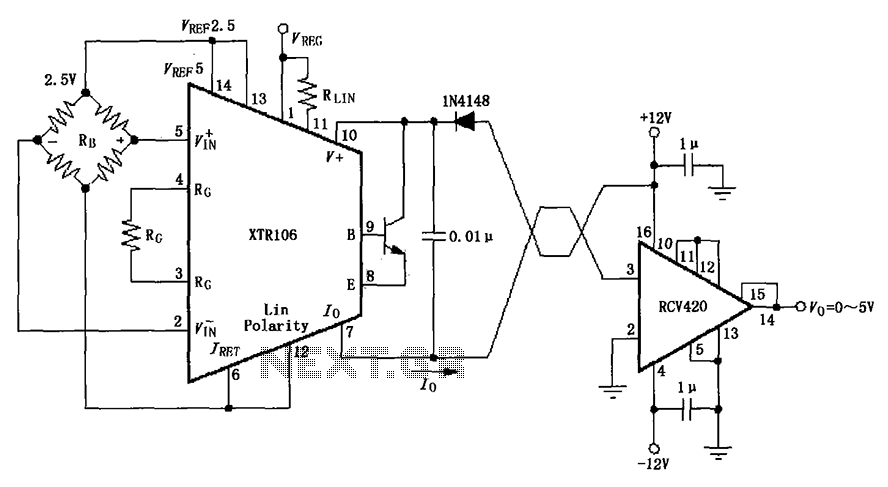
Basic circuit diagram connection of signal and power ISOll3
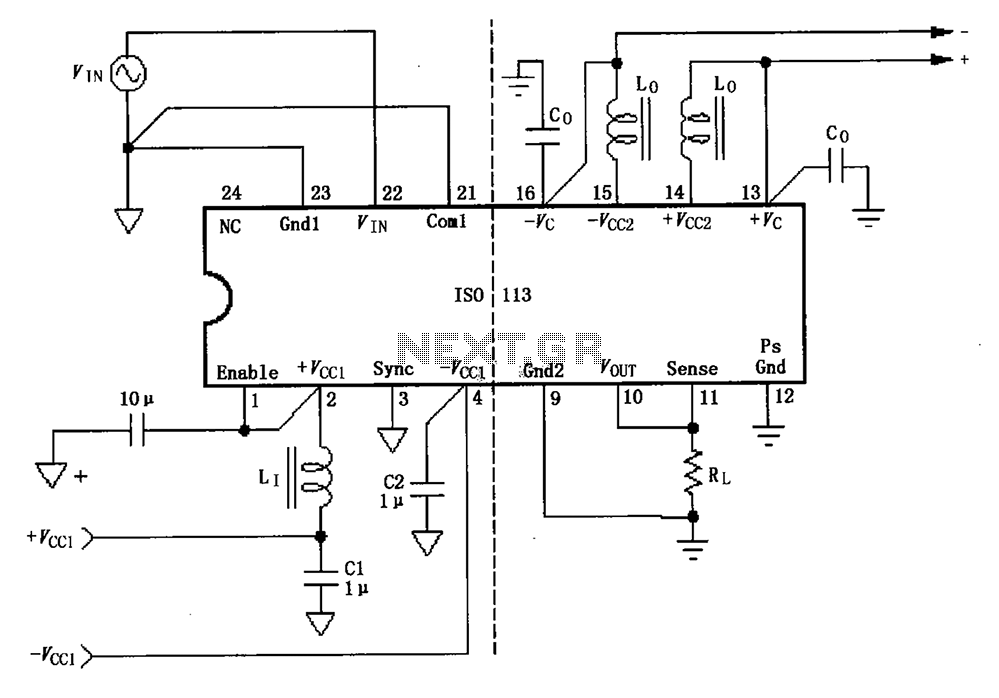
The basic connection circuit for the ISO113 signal and power supply is illustrated. Each power supply terminal must include a bypass filter. If the output current from the isolated power supply exceeds 15mA, it is advisable to utilize an external filter connected to the power pin and the +Vcc1 pin. The output pin of the isolation rectifier (Vcc2) and the amplifier input supply pins (Vc) may be linked to a ripple filter or calibrator. The Com1 pin connects to the signal source, while the Sense pin is connected to the load's upper end, which helps mitigate voltage drop errors caused by long wiring. Gnd1 is connected to Com1, and VOUT and Sense are interconnected at the relative socket connection. If the TTL level is low, the internal DC-DC converter will be disabled. The internal transformer couples the DC/DC converter to the isolation amplifier input power, with all power pins incorporating a 0.1µF capacitor to ground.
The ISO113 is a precision isolation amplifier designed for applications requiring signal isolation and power supply decoupling. The schematic typically includes multiple power supply terminals, each equipped with bypass filters to ensure stable operation and minimize noise. These filters are crucial, especially when the output current of the isolated power supply exceeds 15mA, as they help maintain signal integrity.
In scenarios where higher current is anticipated, the connection of an external filter to the +Vcc1 pin is recommended to further enhance performance. The output pin of the isolation rectifier (Vcc2) serves to provide isolated power to the amplifier, while the amplifier's input supply pins (Vc) can be linked to additional ripple filters or calibrators, depending on the specific application requirements.
To address potential voltage drop issues caused by long wiring, the Com1 pin is strategically connected to the signal source, and the Sense pin is linked to the upper end of the load. This configuration aids in accurate signal transmission by compensating for any losses incurred due to wire resistance.
Grounding is facilitated through the Gnd1 connection to Com1, ensuring a common reference point for the circuit. The VOUT and Sense pins are interconnected at their respective sockets, and the system includes a safety feature where a low TTL level disables the internal DC-DC converter. This feature is critical for preventing unwanted operation and protecting the circuit during fault conditions.
The internal transformer provides coupling between the DC/DC converter and the isolation amplifier input power, ensuring that the isolated signals are appropriately powered. Furthermore, each power pin in the circuit is equipped with a 0.1µF capacitor to ground, which serves to filter out high-frequency noise and stabilize the power supply, enhancing the overall reliability and performance of the ISO113 circuit configuration. As shown for the basic connection circuit ISO113 signal and power supply. Each power supply terminal must have a bypass filter. When isolated power supply output current is gre ater than 15mA, we recommend the use of such power pin + Vcc1 pin external Ji filter. Isolation rectifier output pin ( Vcc2) and amplifier input supply pins ( Vc) can be attached to the ripple filter or calibrator. Com1 feet to the signal source, Sense then load the upper end, to reduce the transmission due to the long wires cause a voltage drop caused by the error.
Gnd1 connected to Com1, VOUT and Sense in the relative socket connection, or TTL low will disable the internal DC-DC converter works. Internal transformer coupling DC/DC converter by the isolation amplifier input power, all power has feet within a 0.1 F capacitor to ground.
The ISO113 is a precision isolation amplifier designed for applications requiring signal isolation and power supply decoupling. The schematic typically includes multiple power supply terminals, each equipped with bypass filters to ensure stable operation and minimize noise. These filters are crucial, especially when the output current of the isolated power supply exceeds 15mA, as they help maintain signal integrity.
In scenarios where higher current is anticipated, the connection of an external filter to the +Vcc1 pin is recommended to further enhance performance. The output pin of the isolation rectifier (Vcc2) serves to provide isolated power to the amplifier, while the amplifier's input supply pins (Vc) can be linked to additional ripple filters or calibrators, depending on the specific application requirements.
To address potential voltage drop issues caused by long wiring, the Com1 pin is strategically connected to the signal source, and the Sense pin is linked to the upper end of the load. This configuration aids in accurate signal transmission by compensating for any losses incurred due to wire resistance.
Grounding is facilitated through the Gnd1 connection to Com1, ensuring a common reference point for the circuit. The VOUT and Sense pins are interconnected at their respective sockets, and the system includes a safety feature where a low TTL level disables the internal DC-DC converter. This feature is critical for preventing unwanted operation and protecting the circuit during fault conditions.
The internal transformer provides coupling between the DC/DC converter and the isolation amplifier input power, ensuring that the isolated signals are appropriately powered. Furthermore, each power pin in the circuit is equipped with a 0.1µF capacitor to ground, which serves to filter out high-frequency noise and stabilize the power supply, enhancing the overall reliability and performance of the ISO113 circuit configuration. As shown for the basic connection circuit ISO113 signal and power supply. Each power supply terminal must have a bypass filter. When isolated power supply output current is gre ater than 15mA, we recommend the use of such power pin + Vcc1 pin external Ji filter. Isolation rectifier output pin ( Vcc2) and amplifier input supply pins ( Vc) can be attached to the ripple filter or calibrator. Com1 feet to the signal source, Sense then load the upper end, to reduce the transmission due to the long wires cause a voltage drop caused by the error.
Gnd1 connected to Com1, VOUT and Sense in the relative socket connection, or TTL low will disable the internal DC-DC converter works. Internal transformer coupling DC/DC converter by the isolation amplifier input power, all power has feet within a 0.1 F capacitor to ground.
